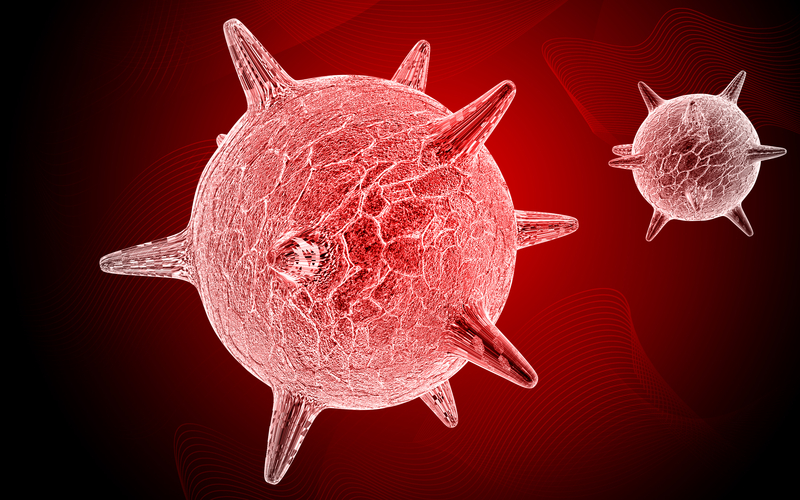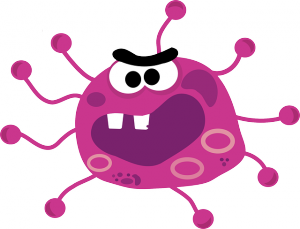Research has shown that there is a chance that genital herpes may lead to cervical cancer. Cervical cancer is the cause of death for thousands of women annually.
So How Are These Two Connected?
There are several kinds of herpes virus, but the one found to be linked to cervical cancer is herpes simplex virus 2, one of the main causes of genital herpes and is known to affect millions across the globe. A shocking survey showed that half of the women who suffered from invasive cervical cancer was found to have the herpes simplex virus 2 in them. Many did not even show signs of having herpes.
However, researchers assure that the HSV 2 is not the culprit alone. HSV 2 is quite harmless and not exactly fatal when found on its own. The real danger comes if the HSV 2 is found with the human papillomavirus, also known as HPV, in their body.
There are many different kinds of HPV out there, and their effects on the body are relatively harmless. They are prone to cause genital warts, and are usually a sexually transmitted disease. However, there are also some dangerous kinds of HPV which can prove to be a cause of concern.
There are 14 types of HPV out there that can lead to a fatal health state, and invasive cervical cancer. These types of HPV cause 90% of the cervical cancer cases and are also the cause of various other kinds of genital cancers.

HSV 2 is one of the main causes of genital herpes and is a solely sexually transmitted infection. It is known to cause blisters in the genital and rectal area of a person, which then break to make very painful sores. Herpes is a very contagious infection. A person carrying herpes is constantly shedding the herpes virus. Genital herpes has yet to find a cure; there are medication to soothe and lessen herpes attacks; however, there still has been to discovery to completely eliminate the HSV after it has entered the body.
A person who has both HSV 2 and HPV were twice or even thrice more likely to get cervical cancer than a person who did not. This is one of the reasons why doctors stress on women to get a Pap smear, where the lab reports show if the person has HPV present in their body or not. A regular round of Pap smear is a necessary health regime for all women, doctors stress.
The good news is that when detected early, such as via a Pap smear, cervical cancer has a very high rate of getting cured, even to a 100% in many cases. Women are encouraged to get a Pap screening on an annual basis; however, those with unusual results should consult a doctor and get a Pap smear for two or three times a year.
The spread of HPV can easily be stopped by using latex condoms or diaphragms. The herpes simplex virus 1, another cause for genital herpes, is not yet known to have any relation with cervical cancer.
More posts about Herpes and cervical cancer: Can Herpes Lead to Cervical Cancer?




 Experts say that at least 24 million Americans are attacked by the human papillomavirus, which happens to have at least 100 different strains. While there a few of these that only cause genital warts, others are transmitted via sexual contact with no protection used. The second type could be harmless though, which comes as a relief. Unfortunately, there are 14 types of human papillomavirus that lead to an aggressive case of cervical cancer. As a matter of fact, about 90% of all cervical cancer and other genital cancer cases are due to these 14 human papillomavirus.
Experts say that at least 24 million Americans are attacked by the human papillomavirus, which happens to have at least 100 different strains. While there a few of these that only cause genital warts, others are transmitted via sexual contact with no protection used. The second type could be harmless though, which comes as a relief. Unfortunately, there are 14 types of human papillomavirus that lead to an aggressive case of cervical cancer. As a matter of fact, about 90% of all cervical cancer and other genital cancer cases are due to these 14 human papillomavirus. In recent times, the media has been trying to raise awareness of herpes since it targets such a large portion of the human population. It is worst for youngsters, since they have a higher chance of contracting genital herpes. Studies and polls helped discover that over 40% of grade 9 students and more than 70% of high school students have sex, which is probably how the spread herpes to one another. What is upsetting is the fact that they do not know that they have acquired genital herpes, especially since there is a lack of symptoms on the body. As a matter of fact, out of all the people that have been diagnosed this year with herpes, only 10% were aware of genital herpes and its consequences.
In recent times, the media has been trying to raise awareness of herpes since it targets such a large portion of the human population. It is worst for youngsters, since they have a higher chance of contracting genital herpes. Studies and polls helped discover that over 40% of grade 9 students and more than 70% of high school students have sex, which is probably how the spread herpes to one another. What is upsetting is the fact that they do not know that they have acquired genital herpes, especially since there is a lack of symptoms on the body. As a matter of fact, out of all the people that have been diagnosed this year with herpes, only 10% were aware of genital herpes and its consequences.